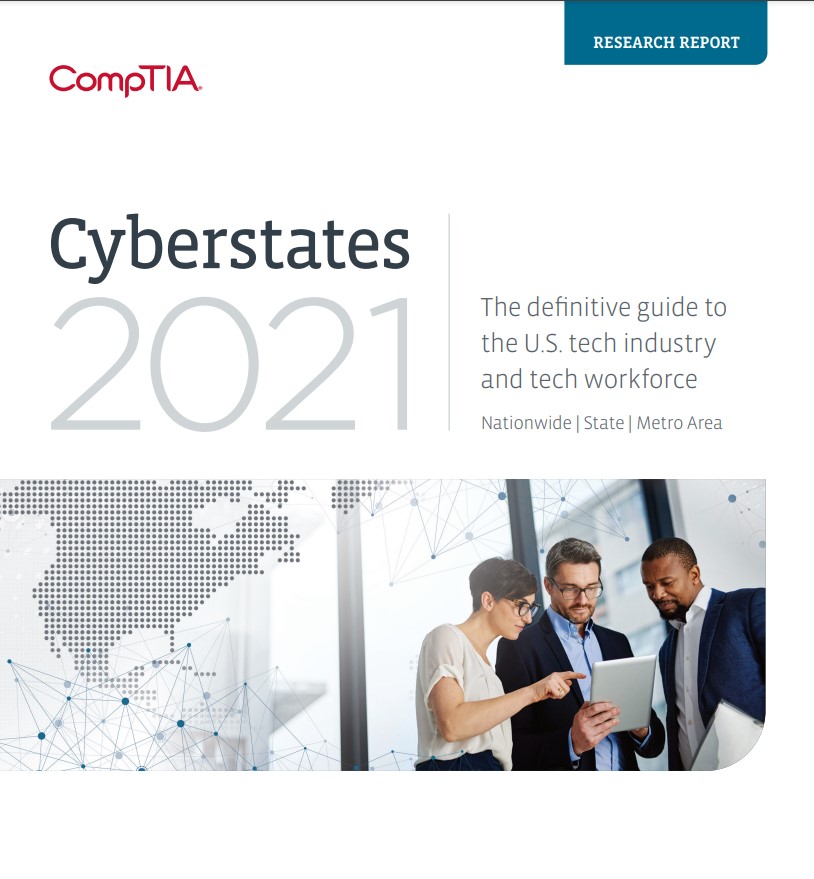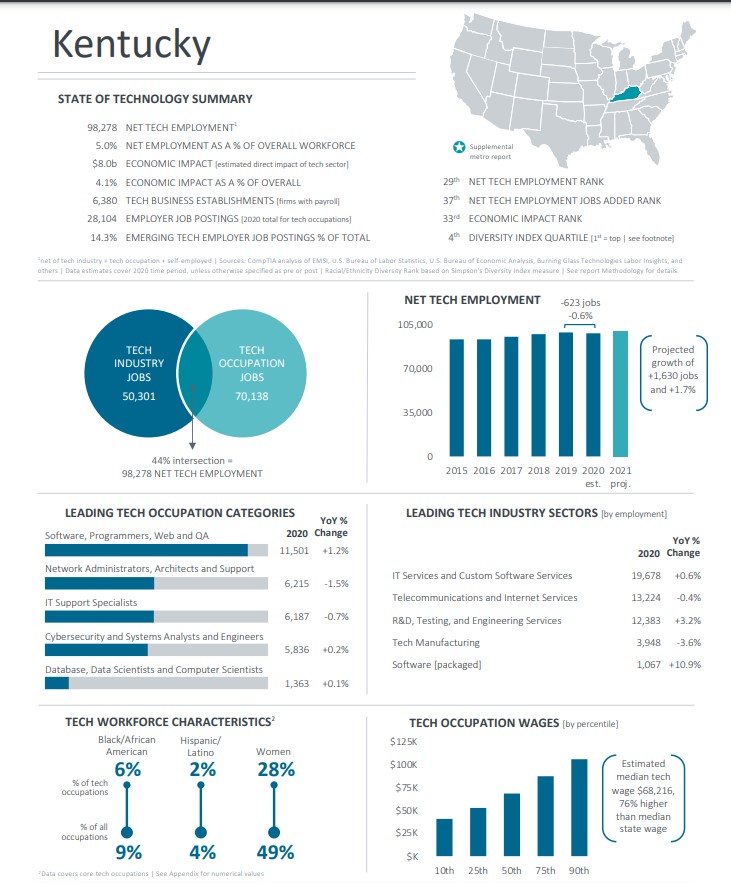
CompTIA designed Cyberstates to serve as a reference tool, making national, state, and metro area-level data accessible to a wide range of
users. Cyberstates quantifies the size and scope of the tech industry and the tech workforce across multiple vectors. To provide additional
context, Cyberstates includes time-series trending, average wages, business establishments, job postings, gender ratios, innovation and
emerging tech metrics, and more. For the interactive online version of Cyberstates, visit www.cyberstates.org.
The tech workforce consists of two primary components, represented as a single figure by the ‘net tech employment’ designation. The
foundation is the set of technology professionals working in technical positions, such as IT support, network engineering, software
development, data scientist, and related roles. Many of these professionals work for technology companies (46.5 percent), but many
others are employed by organizations across every industry sector in the U.S. economy (53.5 percent).
The second component consists of the business professionals employed by technology companies. These professionals – encompassing
sales, marketing, finance, HR, operations and management, play an important role in supporting the development and delivery of the
technology products and services used throughout the economy. Slightly more than 34 percent of the net tech-employment total consists
of tech industry business professionals.
One final segment involves workers classified as self-employed.
Top projected growth occupations for 2021:
+4.4% Cybersecurity
+4.4% Data Scientists
+3.7% Software Developers and Software QA
+2.6% Web Developers and Digital Interface Designers
+2.4% CIOs and IT Managers
+2.2% Database Administrators and Architects
+2.2% IT User Support Specialists

⇥ By 2030, projections from the U.S. Bureau of Labor Statistics
and EMSI put the base of tech occupation employment at
approximately 9.0 million (note: this covers occupations only
and represents a subset of the net tech employment figure
presented previously).
⇥ Calculating future workforce needs over the next decade is a
function of several variables. First, there is a growth
component, which may entail organizations adding headcount
due to expansion or possibly to support new emerging
technologies. Secondly, there is a retirement factor, with a
portion of the workforce transitioning away from the workforce
permanently. And lastly, there is a segment leaving the
workforce for some other reason, also referred to as
separations. These may stem from a career change, a return to
school, family pursuits, or other. Changes to any of these
variables can boost or shrink future workforce projections.
⇥ The average replacement rate for tech occupations during
2020-2030 is expected to average about 7 percent annually, or
nearly 580,000 workers each year, totaling several million
through 2030. This is in addition to the workers needed due to
growth.
⇥ Tech occupation employment is expected to grow at about
twice the rate of overall employment across the economy.
Many tech occupations will grow at 4x to 5x the national rate.
See Appendix for detailed 2020-2030 comparisons.
⇥ Cybersecurity, +31%
⇥ Data Scientists, +30%
⇥ Software Developers, +23%
⇥ Web Developers, +15%
⇥ CIOs and IT Managers, +14%
⇥ Database Admins and Architects, +13%
⇥ IT Support Specialists, +13%
⇥ Systems Analysts and Engineers, +12%
